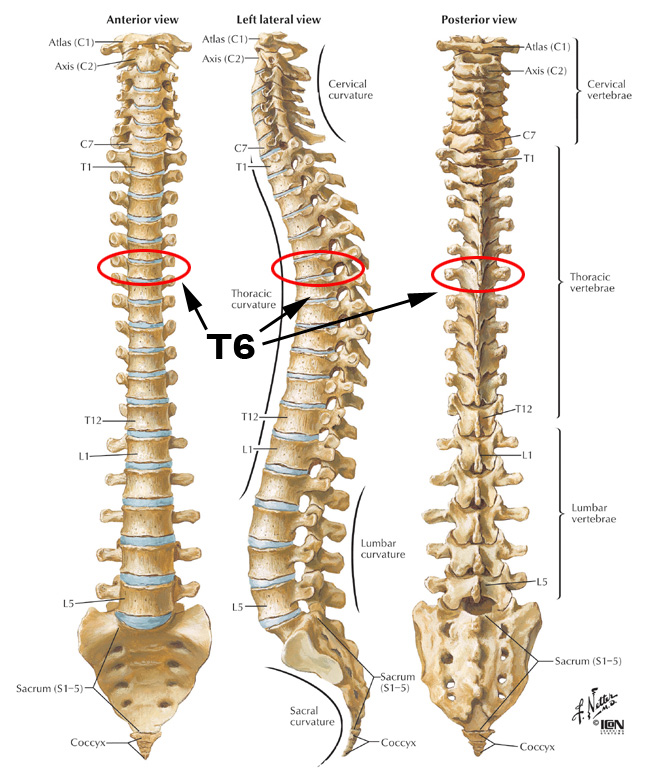Osteogenesis imperfecta
1. Spine
The spine, also known as vertebral column or backbone, is a structure formed by bones called vertebrae that form a column that goes from the pelvis to the cranium. Inside the spine we find the the spinal cord, a group of nerves that connects the brain with different parts of the body and is responsible for sending and receiving nerve impulses.
The spine is divided into five different parts (Figure 1):
- Cervical spine: made up of 7 vertebrae articulated to allow you to move the neck. The cervical vertebrae are designated with the letter C, followed by a number refering to their position (C1, C2, C3…).
- Thoracic or dorsal spine: made up of 12 vertebrae attached to the ribs to form the thoracic or rib cage, which enclosed the lungs and the heart. The thoracic vertebrae are designated with the letter T or D, followed by a number refering to their position (T1, T2, T3… or D1, D2, D3…).
- Lumbar spine: made up of 5 thick vertebrae. The lumbar vertebrae are designated with the letter L, followed by a number noting their position (L1, L2, L3…).
- Sacrum: made up of 5 fused bones forming a triangular structure at the back of the pelvis.
- Coccyx: made up of 5 small fused bones that form the end point of the column (also called the tailbone).

The spine is the structure that provides support to the upper part of the skeleton: it holds up the cranium, protects the spinal cord, and allows us to stand up and move. Between the vertebrae we find the intervertebral discs, made up of an external collagen ring and a gelatinous internal structure that works as a shock absorber for the spine (these are like vertebral pads that help absorb compression at each step or jump). In addition, all along the column we find a group of ligaments that keep the vertebrae together while allowing a certain degree of movement.